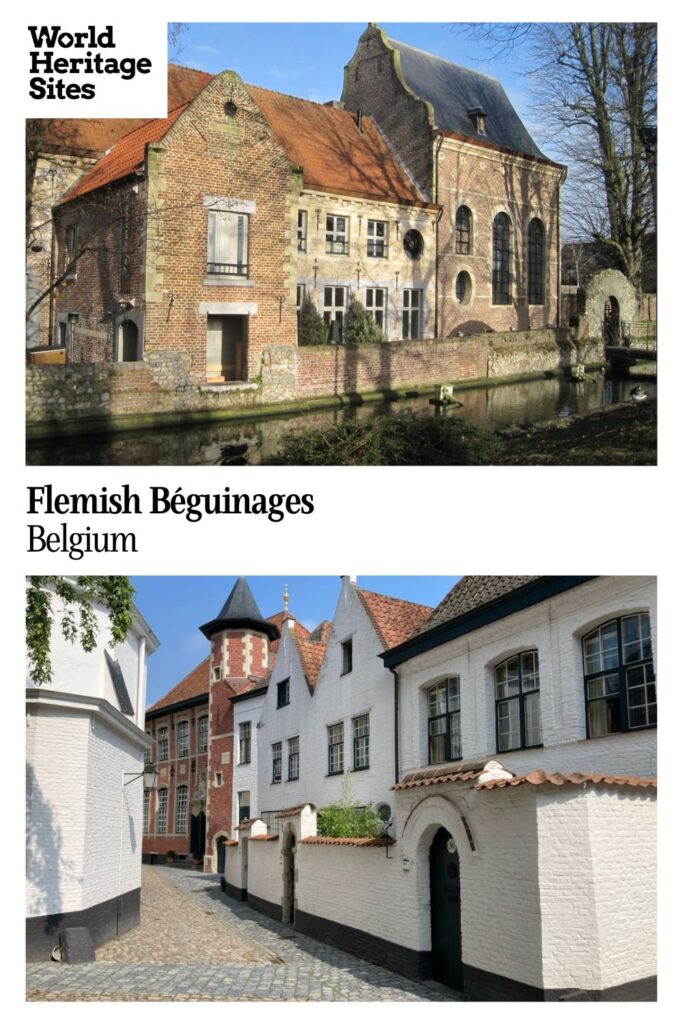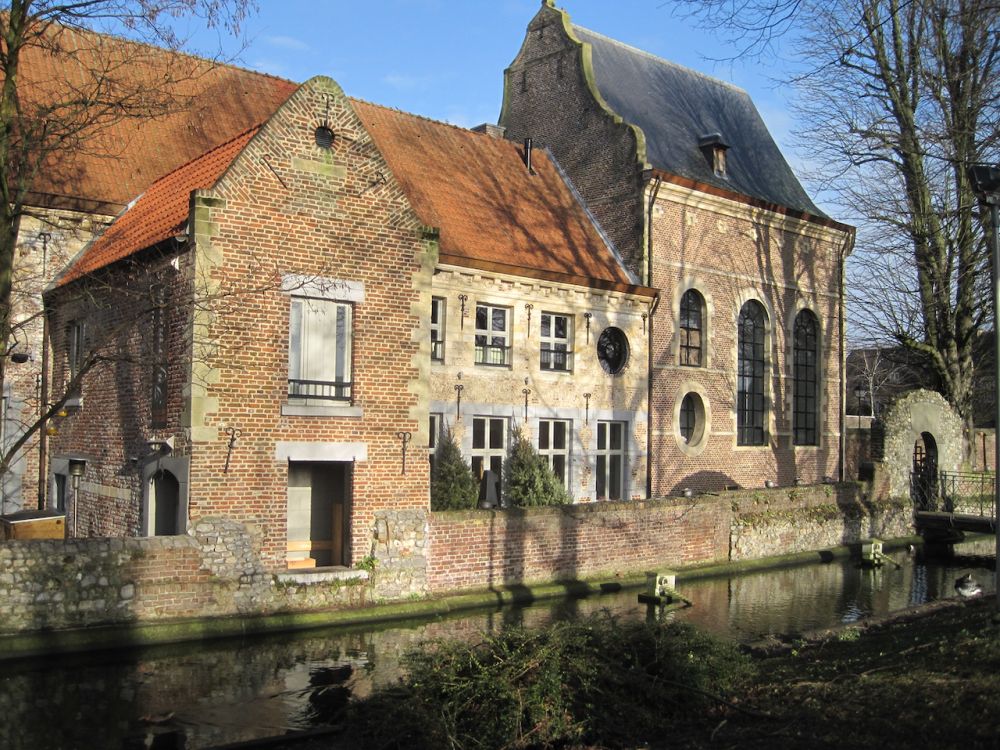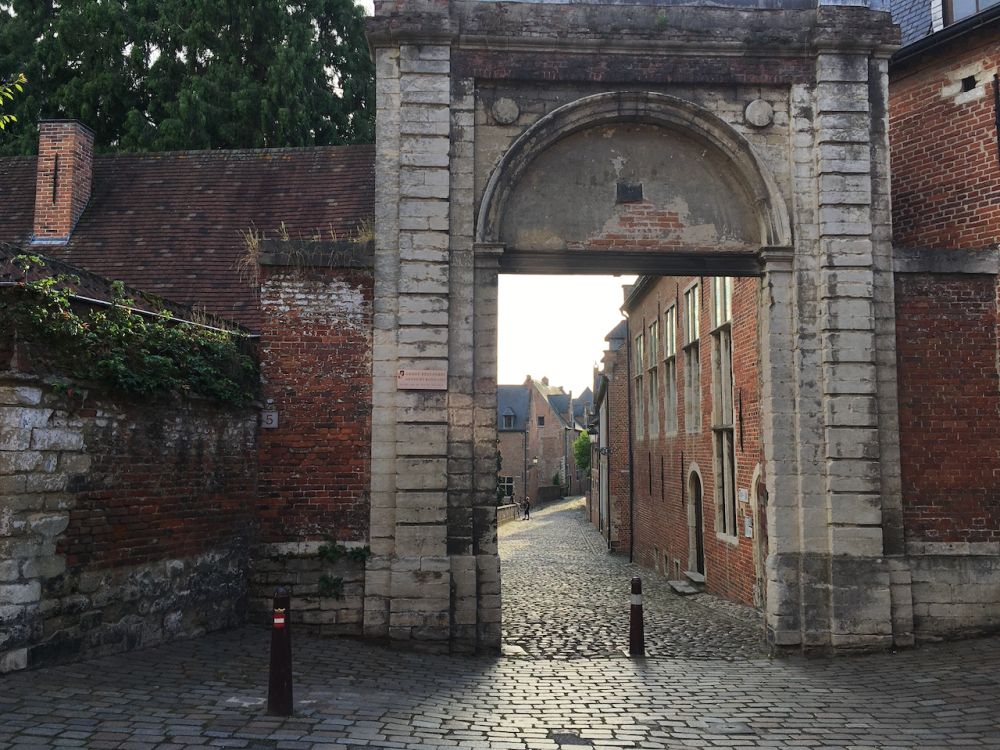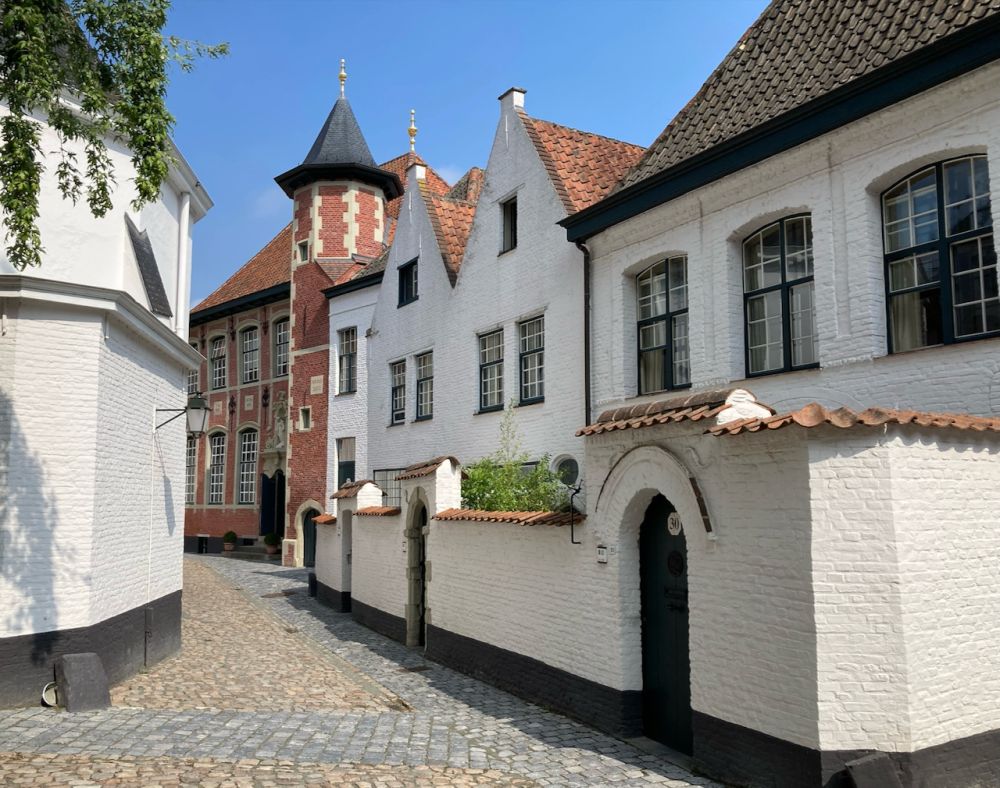Flemish Béguinages
By Diana Goodwin
What are Flemish béguinages?
A béguinage (in French) or begijnhof (in Dutch, the local language) was a place that housed a group of women who dedicated their lives to God. These communities began to appear in Flanders, in what is now Belgium, in the 13th century. They were made up of wealthy and middle-class widows and unmarried women, along with other women employed by the community. Unlike nuns, they did not take religious vows, owned their own property and were free to leave.
Disclosure: This article contains affiliate links. Making a purchase through an affiliate link will mean a small commission for this website. This will not affect your price.

Why are the Flemish béguinages UNESCO World Heritage sites?
According to the UNESCO World Heritage website, “The Flemish béguinages are architectural ensembles composed of houses, churches, ancillary buildings and green spaces, with a layout of either urban or rural origin and built in styles specific to the Flemish cultural region. They are a fascinating reminder of the tradition of the Béguines that developed in north-western Europe in the Middle Ages.”
The 13 sites included on the UNESCO World Heritage list were chosen because of their architectural integrity, which sets them apart from the surrounding environment or landscape. Originally there were many more than 13 such communities in Flanders, most of which survive in varying states of preservation although some have vanished completely.
The 13 sites are:
- Béguinage de Hoogstraten
- Béguinage de Lier (Lierre)
- Grand Béguinage de Mechelen (Malines)
- Béguinage de Turnhout
- Beguinage de Sint-Truiden (Saint Trond)
- Béguinage de Tongeren (Tongres)
- Béguinage de Dendermonde (Termonde)
- Petit Béguinage de Gent (Gand)
- Béguinage de Sint-Amandsberg / Gent (Mont-Saint-Amand-lez-Gand), also known as Sint-Elisabeth
- Béguinage de Diest
- Grand Béguinage of Leuven (Louvain)
- Béguinage de Bruges (Brugge)
- Béguinage de Kortrijk (Courtrail)

What can you expect on a visit to a béguinage?
Most béguinages were built as sort of walled city-within-a-city, and many still retain this atmosphere of seclusion and peace. They are beautiful places with charming houses, courtyards, green lawns and gardens. Most are somewhat off the beaten track, even in the middle of the urban environment, and allow the visitor to feel like they are stepping back in time.
The buildings serve different purposes now that the béguines have died out, but many are still private residences. In general, only the streets and outdoor spaces are open to the public. Some still include a church, and a few house small museums dedicated to the béguines.

Are the béguinages worth visiting?
Absolutely. If you are traveling in Belgium, it is certainly worth seeking out one or more of these historic sites. Because many are located in urban areas, they are easy to get to. Each individual site is easily visited in an hour or two.
What sorts of travelers would like Flemish béguinages?
Anyone with an interest in history, especially women’s history, would find a visit to a Flemish béguinage worthwhile. However, almost everyone would enjoy strolling through a béguinage with its picturesque buildings and cobblestone streets.

Tips for visiting the Flemish béguinages
Among the béguinages included in the UNESCO World Heritage list, some are more accessible by public transportation than others, or more easily combined with a visit to other attractions. Some are open 24 hours a day, while others have specific opening hours.
The best béguinages for a first-time visitor are found in Bruges, Mechelen, Leuven and Kortrijk. These are all interesting, historic cities with good train and highway connections, as well as other attractions including museums, cathedrals etc.
Compare rental car deals in Belgium.
The béguinage in Bruges is easily visited during a visit to this popular tourist destination, and is home to a small museum. The Historic Center of Bruges is a UNESCO site as a whole.
The béguinage in Kortrijk has a small café with both indoor and outdoor seating. It’s the perfect place to sit and enjoy a drink or a meal along with views of the surroundings.
Book accommodations in Bruges, Mechelen, Leuven and/or Kortrijk.
The béguinages in Tongeren and Turnhout also have museums where you can learn more about the life of the béguines.
Where are the béguinages?
There are 13 béguinages included in the UNESCO World Heritage listing that are scattered across Flanders, the northern region of Belgium. They are located in Bruges, Kortrijk, Ghent, Sint-Amandsberg (part of Ghent), Dendermonde, Mechelen, Leuven, Lier, Hoogstraten, Turnhout, Diest, Tongeren, and Sint-Truiden.
Most have parking nearby if not inside the béguinage itself, as they are often car-free sites or have limited vehicle access.
For more information about individual béguinages, see the tourism information website of the city where each is located.
Diana Goodwin has degrees in history and art history from Yale and the University of Michigan. She worked in Hollywood for 10 years before moving to Belgium, where she currently lives with her husband and two cats. When she’s not traveling, she works as a freelance writer and translator. Read her blog, Based in Belgium.
Have you visited any of these béguinages? If so, do you have any additional information or advice about this UNESCO World Heritage site? Please add your comments below!

Veel geluk met deze nieuwe uitdaging, deze is al geslaagd. Proficiat.
Translation: Much luck with this new challenge, it’s already succeeding. Congratulations.
My response: Thank you!